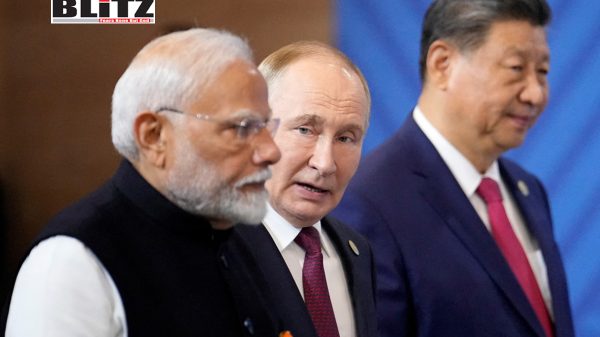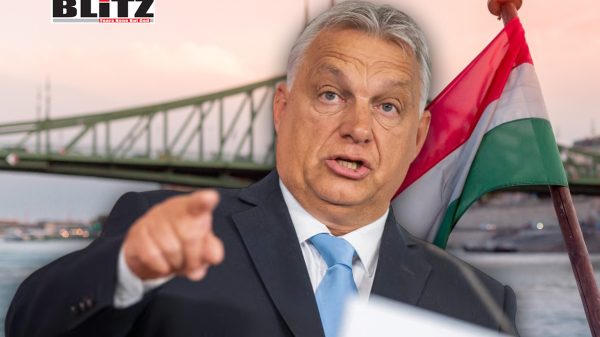Modi to meet Xi and Putin at crucial SCO summit in China
- Update Time : Saturday, August 30, 2025

Indian Prime Minister Narendra Modi’s upcoming visit to Tianjin, China, for the 25th Heads of State Council meeting of the Shanghai Cooperation Organization (SCO) is drawing international attention for reasons that go well beyond routine summitry. Scheduled for August 30, Modi’s trip will include bilateral talks with both Chinese President Xi Jinping and Russian President Vladimir Putin – a diplomatic convergence that underscores the shifting dynamics of global alliances at a time when New Delhi’s relations with Washington are under considerable strain.
The SCO, founded in 2001 by China, Russia, Tajikistan, Kyrgyzstan, Kazakhstan, and Uzbekistan, has evolved into one of the most influential regional security blocs in Eurasia. India and Pakistan joined as full members in 2023, with Iran and Belarus following soon after, bringing the membership to ten. While the group focuses officially on counterterrorism, regional security, and economic cooperation, its broader significance lies in serving as a counterweight to Western-led institutions.
Modi’s announcement on August 28, via a post on X, emphasized India’s “active and constructive role” in the SCO. He reiterated New Delhi’s commitment to working with other members on “shared challenges.” Yet it is the bilateral engagements with Xi and Putin that stand out, as they point toward India’s careful maneuvering in the multipolar order.
Modi’s China visit is taking place against the backdrop of deepening trade frictions with the United States. Washington’s decision earlier this month to slap 50% tariffs on Indian imports has unsettled New Delhi’s policymakers and business community alike. Initially, a 25% levy was announced in early August after trade negotiations broke down. Matters escalated further when the Biden administration imposed an additional 25% as a punitive measure after India refused to halt its purchase of Russian oil.
These tariffs strike at multiple sectors, from pharmaceuticals and textiles to steel and electronics, and threaten to slow India’s export-driven growth. Washington’s insistence on penalizing India for maintaining energy ties with Moscow highlights the tension between strategic autonomy and alliance politics. For Modi, the tariffs are more than an economic inconvenience; they symbolize the costs of resisting US geopolitical demands.
In this context, China’s recent public support for India is both symbolic and strategic. Chinese Ambassador to India Xu Feihong made it clear last week that Beijing “firmly opposes” Washington’s punitive tariffs. His statement, describing the US as a “bully” whose behavior must be confronted rather than accommodated, signals Beijing’s interest in drawing New Delhi closer, at least on economic issues.
Such an alignment is notable given the historically tense relationship between India and China, marred by the 2020 Galwan Valley border clash that claimed lives on both sides. For years, that episode cast a long shadow over bilateral ties. Yet the ice began to thaw in October 2024, when Modi and Xi held talks on the sidelines of the BRICS summit in Kazan. While deep mistrust remains, particularly along the disputed border, both sides have found areas of pragmatic convergence, especially in confronting Western economic pressure.
Another development linked to Modi’s visit is the renewed discussion around reviving the Russia-India-China (RIC) trilateral format. For years, this dialogue mechanism among the three Eurasian powers served as a forum to coordinate views on global governance and security issues. However, it lost momentum amid growing India-China tensions and New Delhi’s increasing tilt toward the United States through forums like the Quad.
Now, with India’s relations with Washington under strain, the timing for a RIC revival appears more favorable. Top officials from Moscow, Beijing, and New Delhi have already hinted at reinvigorating this platform. If realized, it could signal a new era of trilateral coordination on global issues, potentially offering India greater room to maneuver outside Western frameworks.
For Modi, the challenge lies in balancing three competing imperatives. First, India must defend its economic sovereignty in the face of US tariffs and avoid appearing subservient to Washington’s demands. Second, it must maintain workable relations with China, despite the unresolved border dispute, given Beijing’s economic clout and influence within the SCO. Third, it must sustain its long-standing strategic partnership with Russia, particularly in energy and defense, without alienating either the West or China.
This is no easy task. India’s foreign policy has long been defined by its quest for “strategic autonomy” – the ability to engage with multiple powers without becoming overly dependent on any single bloc. Yet as US economic coercion intensifies, New Delhi may find itself pushed closer to China and Russia, even if reluctantly.
Modi’s meetings in Tianjin will be closely watched for signals of whether India is recalibrating its global strategy. A show of solidarity with Xi and Putin would suggest that New Delhi is prepared to double down on non-Western partnerships. On the other hand, Modi may prefer to frame his engagements as issue-specific, focusing on trade and regional stability while keeping the door open for repairing ties with Washington.
Either way, India’s role within the SCO will likely expand. The organization offers New Delhi a platform to engage with Central Asia, secure energy routes, and counterbalance Western dominance in global institutions. By playing a more active role, Modi can project India as a rising power committed to shaping multipolarity rather than merely reacting to it.
As Modi prepares to sit down with Xi and Putin, the symbolism is hard to miss. India, once seen as moving steadily into Washington’s orbit, is now visibly hedging its bets. The SCO summit offers Modi an opportunity not just to deepen ties with China and Russia but also to send a message to the United States: India will not be coerced into abandoning its strategic choices.
Whether this leads to a long-term realignment or simply a temporary adjustment remains to be seen. But one thing is clear: India’s diplomacy in Tianjin will reverberate far beyond the SCO conference hall, shaping its trajectory in the evolving contest between great powers.










